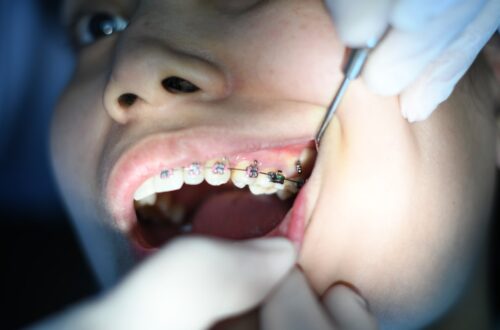Heavy metal toxicity in children occurs when there is an accumulation of heavy metals in the body, leading to adverse health effects. Heavy metals such as lead, mercury, arsenic, cadmium, and aluminum can be found in various sources such as air, water, food, and consumer products. Children are particularly vulnerable to heavy metal toxicity due to their developing bodies and higher rates of exposure. When heavy metals accumulate in the body, they can interfere with the normal functioning of organs and systems, leading to a range of health issues such as developmental delays, cognitive impairment, behavioral problems, and organ damage.
Heavy metal toxicity can occur through various routes of exposure, including ingestion, inhalation, and skin contact. Once inside the body, heavy metals can bind to proteins and enzymes, disrupting their normal function and causing oxidative stress and inflammation. The effects of heavy metal toxicity can be long-lasting and may impact a child’s physical and cognitive development. It is important for parents and caregivers to be aware of the sources of heavy metal exposure and the signs and symptoms of toxicity in order to take appropriate measures to protect children from harm.
Key Takeaways
- Heavy metal toxicity in children can lead to serious health issues and developmental delays.
- Sources of heavy metal exposure in children include contaminated water, lead-based paint, and certain foods.
- Signs and symptoms of heavy metal toxicity in children may include abdominal pain, irritability, and learning difficulties.
- Safe and effective methods for heavy metal detox in kids include chelation therapy and natural detox methods such as cilantro and chlorella.
- Dietary and lifestyle changes, such as consuming organic foods and using non-toxic household products, can support heavy metal detox in children.
- Consulting with a healthcare professional is crucial for heavy metal detox in children to ensure safety and effectiveness.
- Preventing heavy metal exposure in children involves regular testing for heavy metal levels, avoiding known sources of contamination, and promoting a healthy lifestyle.
Identifying Sources of Heavy Metal Exposure
There are numerous sources of heavy metal exposure that children may come into contact with on a daily basis. One common source of lead exposure is lead-based paint in older homes, as well as contaminated soil and dust. Mercury exposure can occur through the consumption of contaminated fish, dental fillings, and environmental pollution. Arsenic can be found in drinking water, rice, and certain pesticides, while cadmium can be present in cigarette smoke, industrial emissions, and some foods. Aluminum exposure can occur through cookware, antiperspirants, and certain medications.
In addition to these sources, children may also be exposed to heavy metals through consumer products such as toys, jewelry, cosmetics, and household items. It is important for parents to be mindful of the potential sources of heavy metal exposure in their environment and take steps to minimize risk. This may include testing for lead in older homes, choosing mercury-free dental fillings, using water filters to remove contaminants, and being cautious about the products they bring into their homes. By being proactive about identifying and addressing sources of heavy metal exposure, parents can help protect their children from the harmful effects of toxicity.
Signs and Symptoms of Heavy Metal Toxicity in Children
The signs and symptoms of heavy metal toxicity in children can vary depending on the type and level of exposure. Common symptoms may include abdominal pain, nausea, vomiting, diarrhea, fatigue, irritability, headaches, and difficulty concentrating. Long-term exposure to heavy metals may also lead to more serious health issues such as developmental delays, learning disabilities, behavioral problems, and organ damage.
Lead toxicity, for example, can cause developmental delays, learning difficulties, irritability, and anemia. Mercury toxicity may result in neurological symptoms such as tremors, memory loss, and difficulty walking. Arsenic exposure can lead to skin lesions, cardiovascular problems, and an increased risk of certain cancers. Cadmium toxicity may cause kidney damage and respiratory issues. Aluminum toxicity has been linked to neurological disorders such as Alzheimer’s disease.
It is important for parents to be aware of these signs and symptoms and seek medical attention if they suspect their child may have been exposed to heavy metals. Early detection and intervention are crucial for minimizing the long-term effects of heavy metal toxicity on children’s health.
Safe and Effective Methods for Heavy Metal Detox in Kids
When it comes to heavy metal detox in kids, it is important to approach the process with caution and under the guidance of a healthcare professional. Detoxification methods should focus on removing heavy metals from the body while minimizing the risk of further harm. Chelation therapy is a common medical treatment for heavy metal detox, which involves the use of chelating agents to bind to heavy metals and facilitate their excretion from the body. However, chelation therapy should only be administered under the supervision of a qualified healthcare provider due to potential side effects and risks.
In addition to chelation therapy, there are natural methods that can support the body’s detoxification processes. These may include dietary changes, supplementation with nutrients such as vitamin C and glutathione, and the use of natural chelating agents such as cilantro and chlorella. Saunas and sweating can also help eliminate toxins from the body. It is important for parents to work with a healthcare professional who is knowledgeable about heavy metal detox in children to develop a safe and effective detoxification plan tailored to their child’s specific needs.
Dietary and Lifestyle Changes to Support Heavy Metal Detox
Dietary and lifestyle changes can play a significant role in supporting heavy metal detox in children. A diet rich in antioxidants such as fruits, vegetables, and herbs can help protect against oxidative stress caused by heavy metal toxicity. Foods high in sulfur such as garlic, onions, and cruciferous vegetables can support the body’s natural detoxification pathways. It is important to choose organic foods whenever possible to minimize exposure to pesticides and other contaminants.
In addition to dietary changes, lifestyle factors such as reducing exposure to environmental toxins, ensuring adequate hydration, getting regular exercise, and promoting healthy sleep habits can all support the body’s natural detoxification processes. Encouraging outdoor play and physical activity can help children sweat out toxins through their skin. Creating a clean and healthy home environment by using natural cleaning products and avoiding products containing heavy metals can also contribute to a child’s overall detoxification efforts.
Consulting with a Healthcare Professional for Heavy Metal Detox

Consulting with a healthcare professional is essential for parents who are considering heavy metal detox for their children. A qualified healthcare provider can conduct tests to assess heavy metal levels in the body and determine the most appropriate course of action. They can also provide guidance on safe and effective detox methods tailored to the child’s individual needs.
Healthcare professionals experienced in heavy metal detox may recommend specific supplements or natural chelating agents to support the body’s detoxification processes. They can also monitor the child’s progress throughout the detoxification process and make any necessary adjustments to the treatment plan. It is important for parents to communicate openly with their healthcare provider about any concerns or questions they may have regarding heavy metal detox for their child.
Preventing Heavy Metal Exposure in Children
Preventing heavy metal exposure in children is crucial for protecting their health and well-being. There are several steps that parents can take to minimize the risk of heavy metal exposure in their environment. This may include testing for lead in older homes and addressing any areas of concern such as lead-based paint or contaminated soil. Using water filters to remove contaminants such as arsenic and lead from drinking water can help reduce exposure.
Parents should also be mindful of potential sources of heavy metals in consumer products such as toys, jewelry, cosmetics, and household items. Choosing products that are free from heavy metals or other harmful chemicals can help minimize the risk of exposure. Educating children about the importance of handwashing before meals and after playing outside can also help reduce the risk of ingesting contaminants.
In conclusion, heavy metal toxicity in children is a serious health concern that requires attention and proactive measures from parents and caregivers. By understanding the sources of heavy metal exposure, recognizing the signs and symptoms of toxicity, implementing safe detox methods under the guidance of a healthcare professional, making dietary and lifestyle changes to support detoxification efforts, consulting with a healthcare provider experienced in heavy metal detox, and taking steps to prevent exposure in the first place, parents can help protect their children from the harmful effects of heavy metals on their health.
Looking for ways to keep your kids healthy and happy? Check out this informative article on heavy metal detox for kids from Sports Fans Net. It provides valuable insights into the importance of detoxifying children’s bodies from heavy metals and offers practical tips on how to do so effectively. With the increasing exposure to environmental toxins, it’s crucial to stay informed and take proactive steps to safeguard your child’s well-being. Learn more about heavy metal detox and its benefits for kids by reading the full article on Sports Fans Net.
FAQs
What is heavy metal detox for kids?
Heavy metal detox for kids is a process of removing toxic heavy metals from a child’s body. These heavy metals can accumulate in the body through exposure to contaminated water, air, food, or other environmental sources.
Why is heavy metal detox important for kids?
Heavy metal exposure in children can lead to a range of health issues, including developmental delays, learning disabilities, behavioral problems, and even organ damage. Detoxifying the body from heavy metals can help reduce the risk of these health problems.
What are the common sources of heavy metal exposure for kids?
Common sources of heavy metal exposure for kids include lead-based paint, contaminated water, certain types of fish, air pollution, and some household products. Additionally, children can be exposed to heavy metals during pregnancy if the mother is exposed to them.
What are the signs of heavy metal toxicity in kids?
Signs of heavy metal toxicity in kids can include developmental delays, learning difficulties, irritability, fatigue, digestive issues, and impaired cognitive function. It’s important to consult a healthcare professional if you suspect heavy metal toxicity in a child.
What are some natural ways to support heavy metal detox in kids?
Natural ways to support heavy metal detox in kids include ensuring a healthy diet rich in antioxidants, vitamins, and minerals, encouraging regular physical activity, and promoting adequate hydration. Additionally, certain supplements and herbs may support the body’s natural detoxification processes.
When should parents consider heavy metal detox for their kids?
Parents should consider heavy metal detox for their kids if they suspect or have confirmed heavy metal exposure, or if their child is exhibiting symptoms of heavy metal toxicity. It’s important to work with a healthcare professional to determine the best course of action for heavy metal detox.





